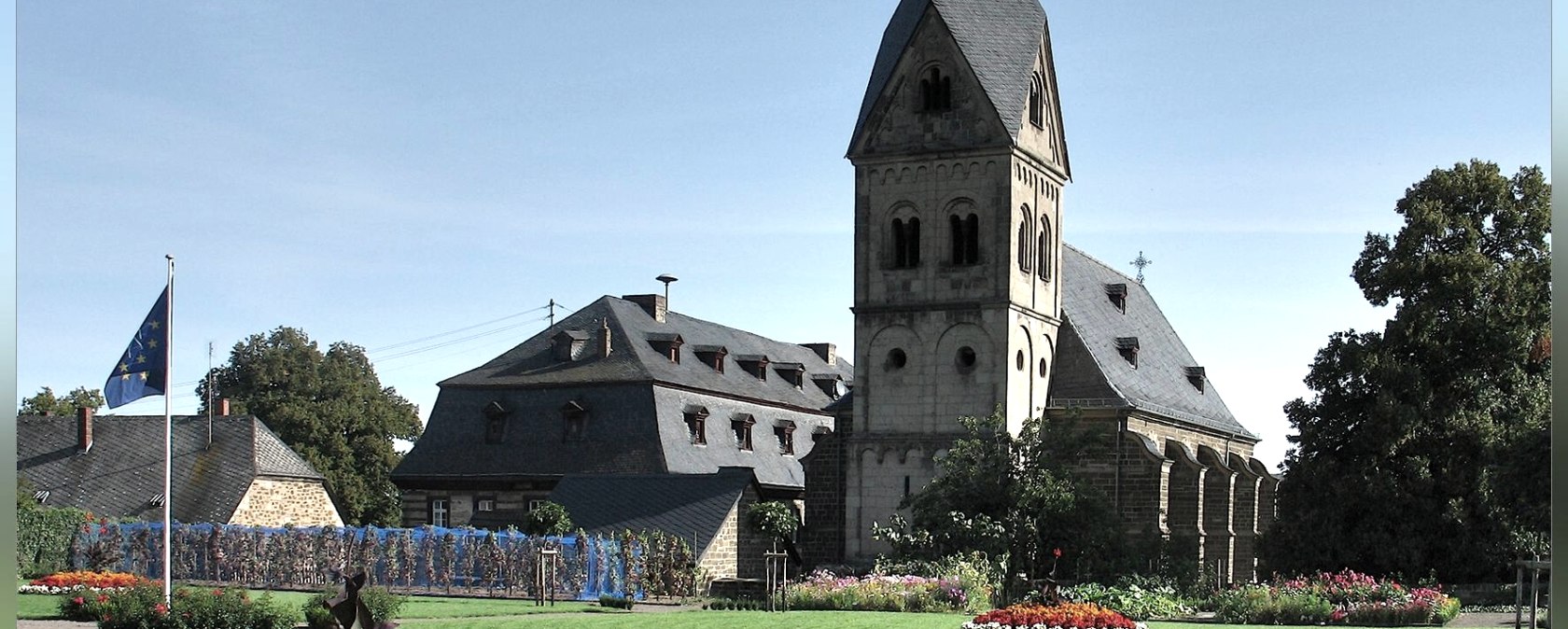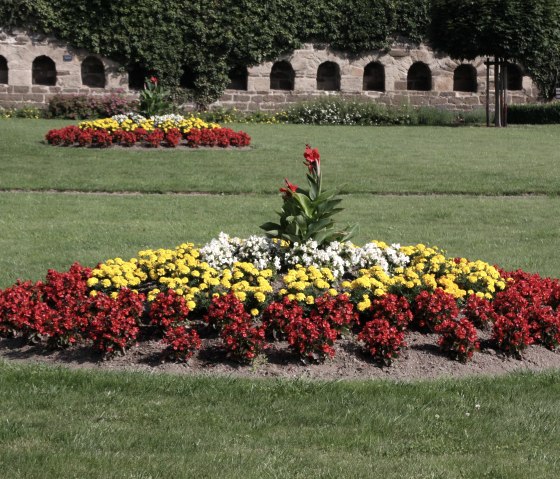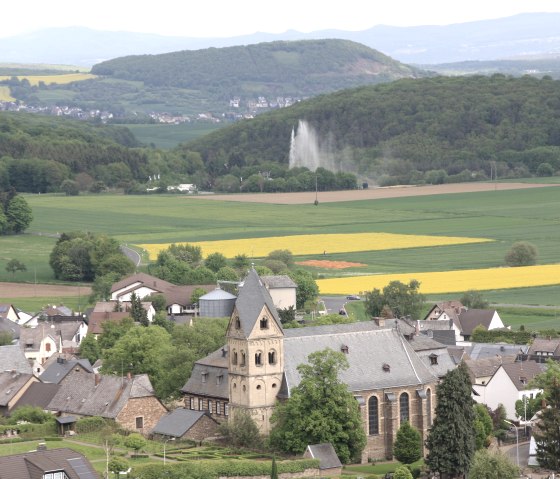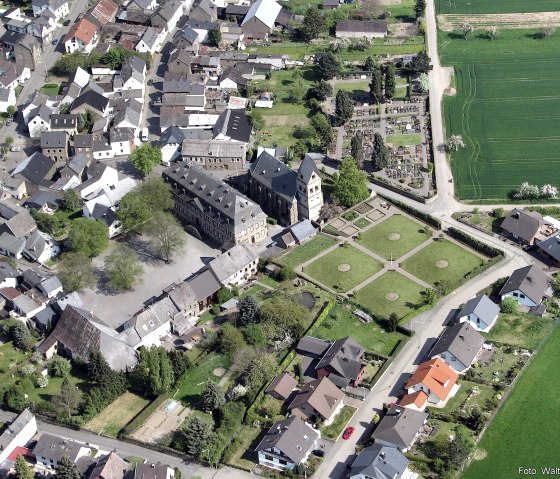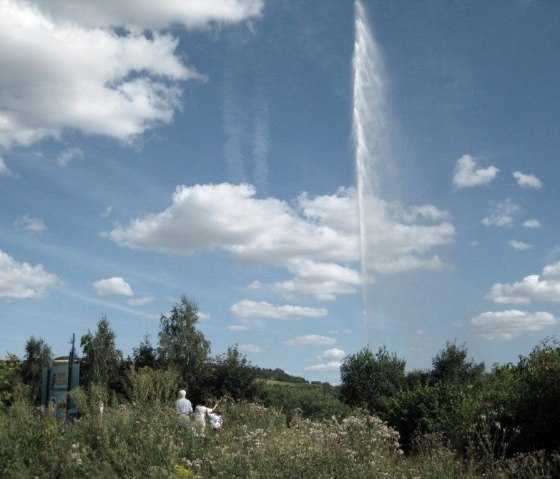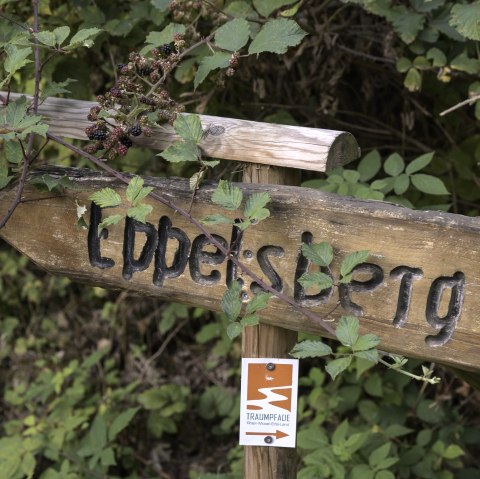Barocker Pfarrgarten mit Kirche in Wehr
Wehr
Baroque parish garden with church in Wehr.
The Baroque parish garden located on Kirchstrasse / Im Wingert is approx. 3000 m² (58 m x 51 m) and is enclosed on three sides by a three meter high wall made of Wehrer tuff.
The garden is the southwestern part of the former Premonstratensian provost office, which belonged to the Steinfeld monastery in the Eifel.
The complex also includes the baroque parish church, the former Propsteigebuilding and the cellar.
The garden has a mild climate by Wehrer standards and the soil is particularly fertile.
The Romanesque tower of the church consecrated to St. Potentinus dates back to 1230. The baroque nave was completed in 1702 as a replacement for an originally smaller building.
Tower and church have been restored over the past few decades, and the church environment has been redesigned.


